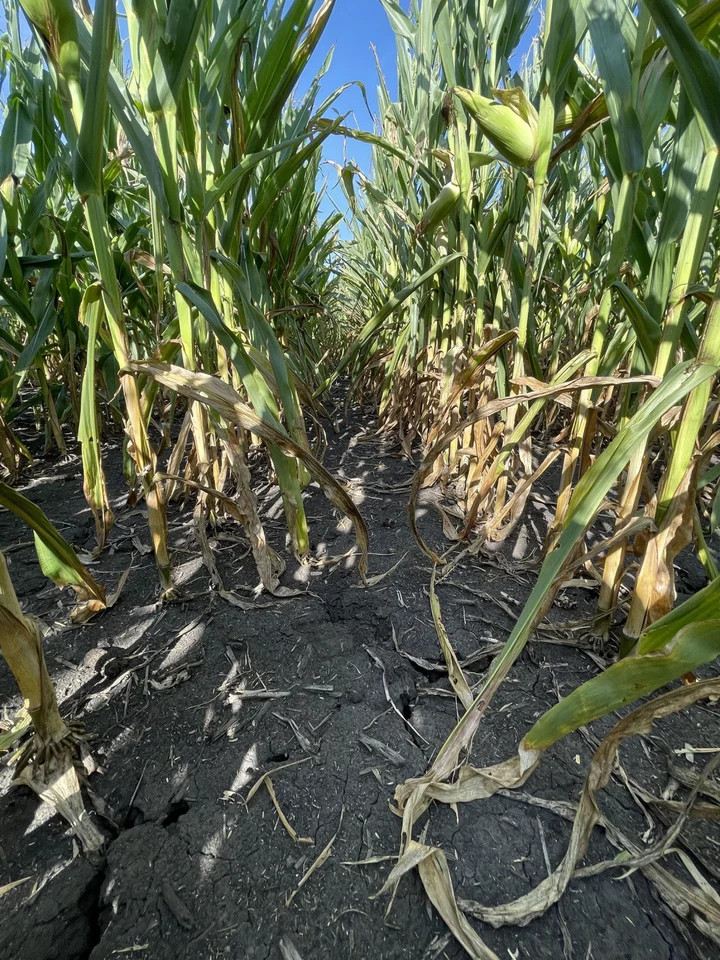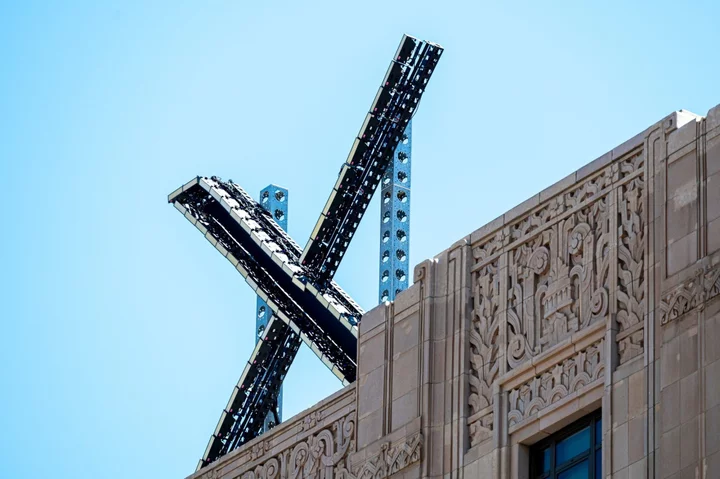Sagging ears just short of maturity, cobs half bare of kernels as if nibbled, earth so dry that deep cracks criss-cross the fields: The US corn harvest is in trouble.
The signs were already there in South Dakota. Scouts surveying fields there this week found what farmers call tip back, when corn kernels aren’t filled all the way to the top of the cob as a result of dryness and poor pollination. It leaves them looking half eaten.
As participants on the crop tour moved deeper into the growing belt, things got worse. In Ohio, scouts found immature ears of grain, indicating that the crop still has weeks left in the growing season. That leaves plants vulnerable to this week’s heat wave.
Temperatures topping 100F (38C) are descending on the Midwest. Conditions are changing so fast that even some results from the tour — seen as more timely and less conservative than government estimates — are already out of date.
“Things are changing right in front of our eyes,” said Thayne Larson, who has grown alfalfa, hay, corn in Kansas for 50 years. “It’s so disappointing when you have what you thought could be a healthy crop, and then the conditions just become extremely, extremely challenging.”
Crops Go ‘Backwards’
With food security already under threat from Europe to Asia, the world has been counting on a big corn harvest to help keep food inflation at bay. A disappointing US harvest could have ripple effects on markets across the globe.
Much will come down to Iowa, the No. 1 US corn grower and where sixth-generation farmer Ben Riensche is for the first-time ever watching his crop go “backwards” because of the heat.
His corn stalks went from bright and green to slightly gray. Instead of sitting tight against the plant, the corn ears are flopping down, the husk has turned brown and the bottom of the stalk — where the plants connects to the roots that go deep underground — looks like it’s been burned. It means that the plant is dead.
“We’re at the point of no return in Iowa,” Riensche, who farms 15,000 acres in the state, said while he was tending to livestock, making sure they had enough water, food and shade to survive the heat. It was 101F as he spoke late Wednesday afternoon. “I’ve never seen a crop go backwards like this — literally get killed by the hot, dry weather.”
Tour Results
Early results from the Pro Farmer Midwest Crop Tour are raising concerns that the crop will fall short of the US Department of Agriculture’s production outlook. Data collected in the first three days of the tour — which don’t fully capture real-time heat damages — show yields are trailing USDA estimates in Ohio, Nebraska, Indiana and Illinois. Only South Dakota looked better-than-forecast.
On Thursday evening, the final tour results will be released.
The heat is hurting soybeans even more as the crop is earlier in its growing season than corn. Pods were falling off plants as the scouts counted them, said Brent Judisch, who’s part of this week’s crop tour.
“This heat is doing more stress than we thought, because it is 100F outside, but as you walk into the fields you feel the temperature rising,” Judisch said. “This is my 11th crop tour, and I don’t remember a heat like this. We have never experienced this in Iowa.”
For many regions of the US crop belt, this season has been marked by turbulence. High temperatures are hitting Midwest fields just when rains in July seemed to have undone the damages of a hot, dry June.
‘Absolutely Devastated’
This season is the “most stressful” Larson of Kansas has ever had when it comes to challenges from Mother Nature. Drought, strong winds, storms and hail have all hit crops this summer. But it’s this week’s bout of extreme heat that’s really sealed the fate for his yields. The plants on his fields are shrinking. They going into “protection mode,” he said.
“You look at what’s going on in Kansas right now, we had a beautiful crop that in a week has been absolutely devastated,” said Gregg Doud, chief economist at Aimpoint research and former chief agriculture negotiator under the Trump administration.
To be sure, the variability of this year’s crop — largely a result of spotty rainfall — suggests that there are bountiful areas that can help to make up for losses in others.
Early measurements in Iowa on Wednesday showed that corn yields can vary from almost 200 bushels an acre at the higher end, to the worst fields in some counties that have yields below 100.
“We were really surprised with the high yield variation that we are seeing,” said Brian Grete, leader of the eastern leg of the crop tour and editor of the Pro Farmer newsletter.
For Riensche in Iowa, the damage from the current high temperatures “is unprecedented,” he said.
“Our crop is literally dying right now,” Riensche said. “Corn was not meant to be grown in the desert.”
--With assistance from Isis Almeida and Gerson Freitas Jr..
Author: Tarso Veloso, Millie Munshi and Michael Hirtzer









